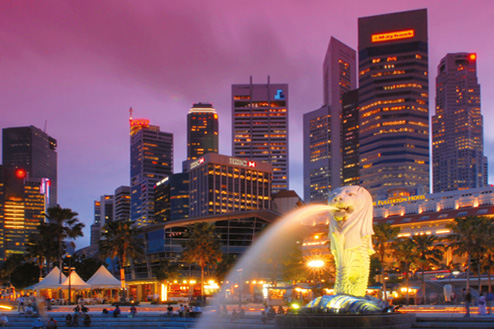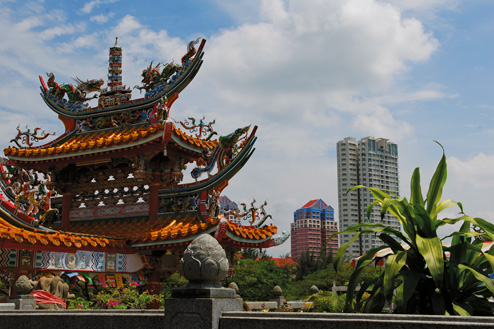Singapore Overview
Singapore’s free market economy has enjoyed almost uninterrupted growth since independence in 1965. The city-state has one of the highest per capital GDPs in the world ($44,666) with standard of living comparable to North America and western Europe. A stable political climate, disciplined unions and non-protectionist trade policy has enabled a well-educated labour force of 2,183,000 to generate a GDP of $194 billion in 2005, which is a rise of 6.4% on the previous year. This looked set to continue as early figures for 2006 already showed around a 9% rise over the same period in 2005. Singapore’s currency is also strong, with Fitch, Moody’s and S&P all giving it triple A ratings.
The building blocks of post-independent Singapore’s economy were trade, manufacturing, shipbuilding, ship repair and oil refining. Total trade exceeded $580 billion, of which exports accounted for $303 billion. Total manufacturing output for all sectors exceeds $190 billion. Singapore is the world’s busiest container port by tonnage and its 10 refineries make it one of the largest oil-refining centres in Asia.
As the economy matured and a more highly skilled workforce grew, financial and business services, telecommunications, electronics and professional services transformed Singapore into the regional centre of operations and a manufacturing base for over 7,000 multinational companies across a broad spectrum of industries. Typical of all sectors in the 90s, manufacturing moved up the technological ladder with electronics commanding a 30% global share of hard disk drive output volumes. Tourism has become increasingly important and 2005 saw a record 8.9 million visitors bring in $10.8 billion in receipts.
In response to global competition, lower manufacturing costs in neighbouring countries and rising local wages, the government shifted the focus to higher value-added services catering to a global knowledge-based economy. The attention is on research and development, information technology, info-communication, e-business, media and digital entertainment, film-making and the arts. Life sciences, comprising pharmaceuticals, biotechnology and medical devices, are strategic to the next phase of economic growth. The telecommunications, financial services and power generation industries are in the process of liberalisation to encourage participation by foreign companies. The drive to be a regional arts hub was embodied in the opening of the $650 million Esplanade arts centre in 2002.
The government has never taken for granted its economic success, fully appreciating its vulnerability and dependence on regional and global events and this has resulted in a tightly managed economy.
The building blocks of post-independent Singapore’s economy were trade, manufacturing, shipbuilding, ship repair and oil refining. Total trade exceeded $580 billion, of which exports accounted for $303 billion. Total manufacturing output for all sectors exceeds $190 billion. Singapore is the world’s busiest container port by tonnage and its 10 refineries make it one of the largest oil-refining centres in Asia.
As the economy matured and a more highly skilled workforce grew, financial and business services, telecommunications, electronics and professional services transformed Singapore into the regional centre of operations and a manufacturing base for over 7,000 multinational companies across a broad spectrum of industries. Typical of all sectors in the 90s, manufacturing moved up the technological ladder with electronics commanding a 30% global share of hard disk drive output volumes. Tourism has become increasingly important and 2005 saw a record 8.9 million visitors bring in $10.8 billion in receipts.
In response to global competition, lower manufacturing costs in neighbouring countries and rising local wages, the government shifted the focus to higher value-added services catering to a global knowledge-based economy. The attention is on research and development, information technology, info-communication, e-business, media and digital entertainment, film-making and the arts. Life sciences, comprising pharmaceuticals, biotechnology and medical devices, are strategic to the next phase of economic growth. The telecommunications, financial services and power generation industries are in the process of liberalisation to encourage participation by foreign companies. The drive to be a regional arts hub was embodied in the opening of the $650 million Esplanade arts centre in 2002.
The government has never taken for granted its economic success, fully appreciating its vulnerability and dependence on regional and global events and this has resulted in a tightly managed economy.













